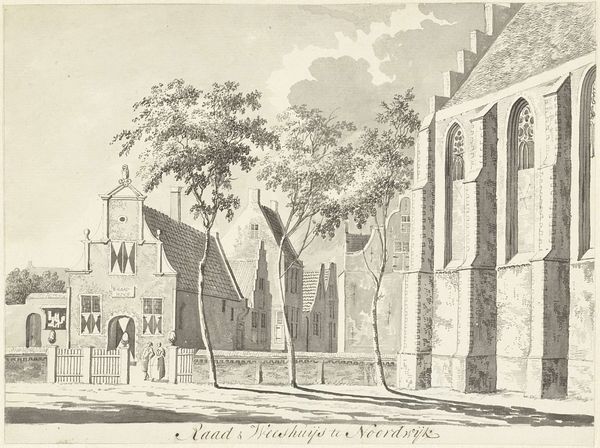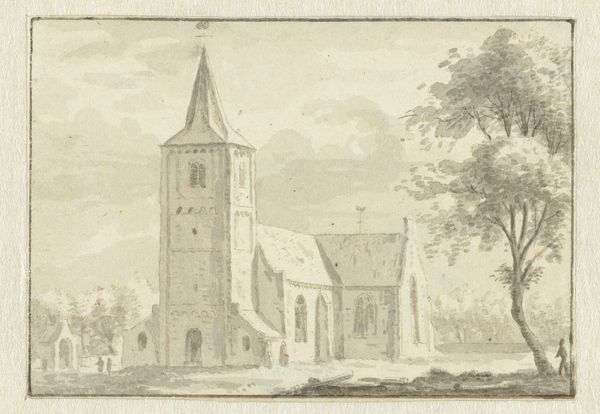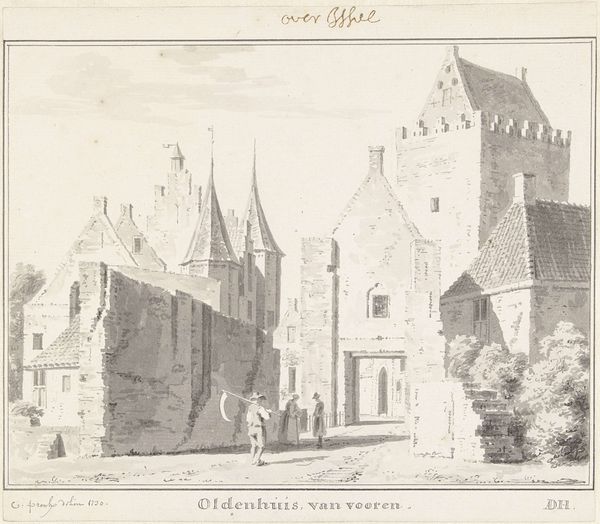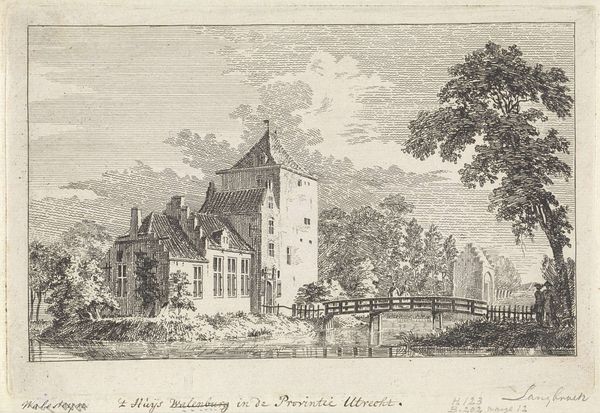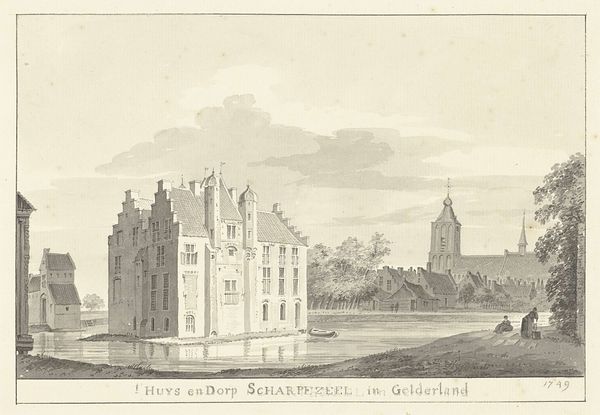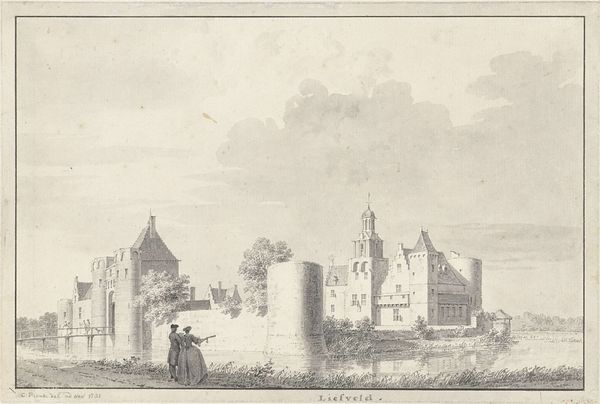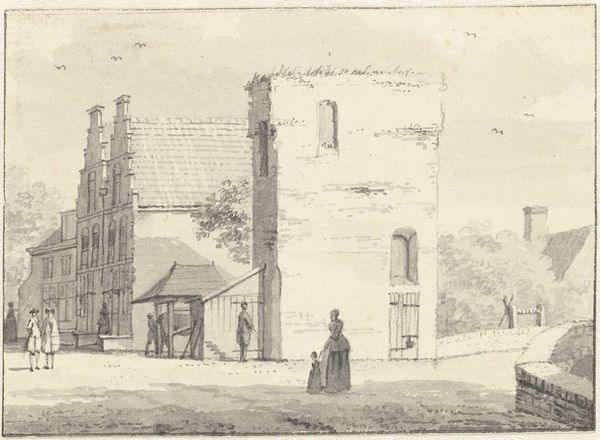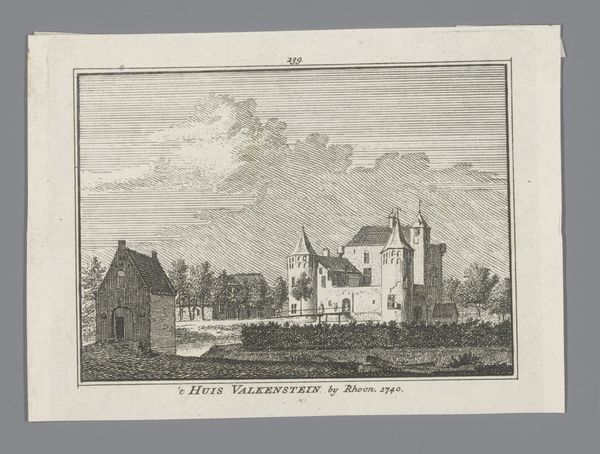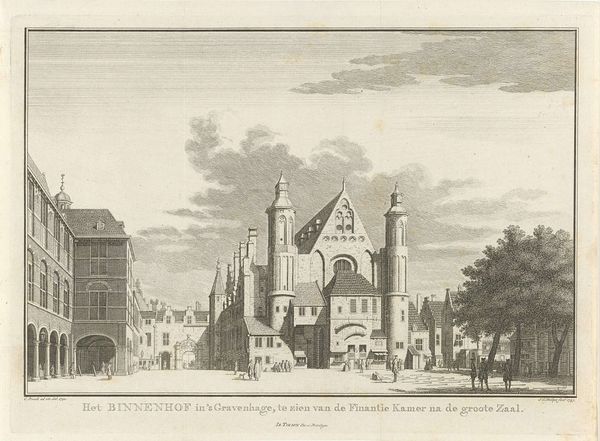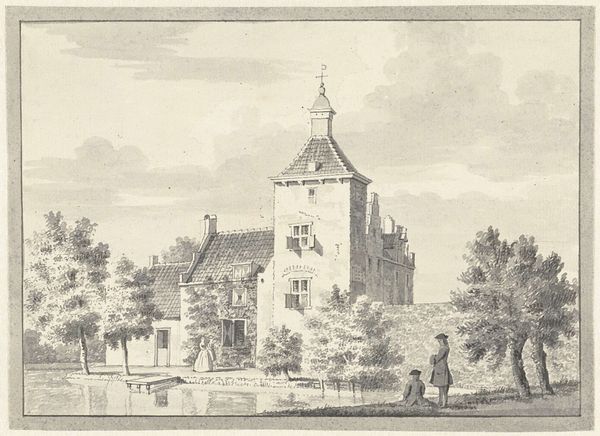
drawing, paper, ink, architecture
#
architectural sketch
#
drawing
#
aged paper
#
baroque
#
landscape
#
paper
#
ink
#
architectural section drawing
#
architectural drawing
#
architecture drawing
#
cityscape
#
architecture
#
realism
Dimensions: height 170 mm, width 208 mm
Copyright: Rijks Museum: Open Domain
Curator: Cornelis Pronk's "Binnenplein van het Huis Oldenhuis te Vollenhove," created in 1730, presents a fascinating architectural sketch. The piece, rendered in ink on paper, offers a glimpse into a specific locale. Editor: My initial impression is one of starkness, despite the detail. The monochromatic palette emphasizes the architectural forms, creating an almost severe, yet meticulously crafted atmosphere. Curator: Pronk was known for his topographical drawings. These weren’t just pretty pictures; they served a purpose. Drawings like these were important documentation, capturing the likeness of structures which often faced alteration or even demolition. They help us to understand what buildings existed and what they looked like, making it an historical record. Editor: The line work is indeed remarkable. The strategic use of hatching and cross-hatching builds volume and suggests the aging of the materials. I find myself drawn to the interplay between the geometry of the buildings and the more organic rendering of the trees in the background. Semiotically speaking, it is not an arbitrary rendition, because the lines make the aged architectural designs prominent. Curator: And that aging speaks volumes. Notice the clear signs of weathering on the stone of the tower. These images played a role in civic identity; even capturing details about the owners of the home, which allowed it to project power and prestige. It invites questions: what purpose did the complex serve, and how was its architecture employed to influence how it was regarded? Editor: From a purely formal point of view, the tower dominates, creating a vertical thrust countered by the horizontal lines of the courtyard buildings. This opposition generates a visual tension, doesn't it? However, how do we know how much Pronk embellished the true likeness? Is this an accurate representation or is this stylized based on period artistic interpretations of realism? Curator: Authenticity is key, though some artistic license is expected. Ultimately, it is an invaluable historical record. The composition draws the viewer into a world of Dutch architectural heritage that provides a social narrative, more than mere aesthetic enjoyment. Editor: It allows us a moment to really examine this architecture, and, like you, consider the buildings' place within a complex web of meanings. I find that so fascinating.
Comments
No comments
Be the first to comment and join the conversation on the ultimate creative platform.

